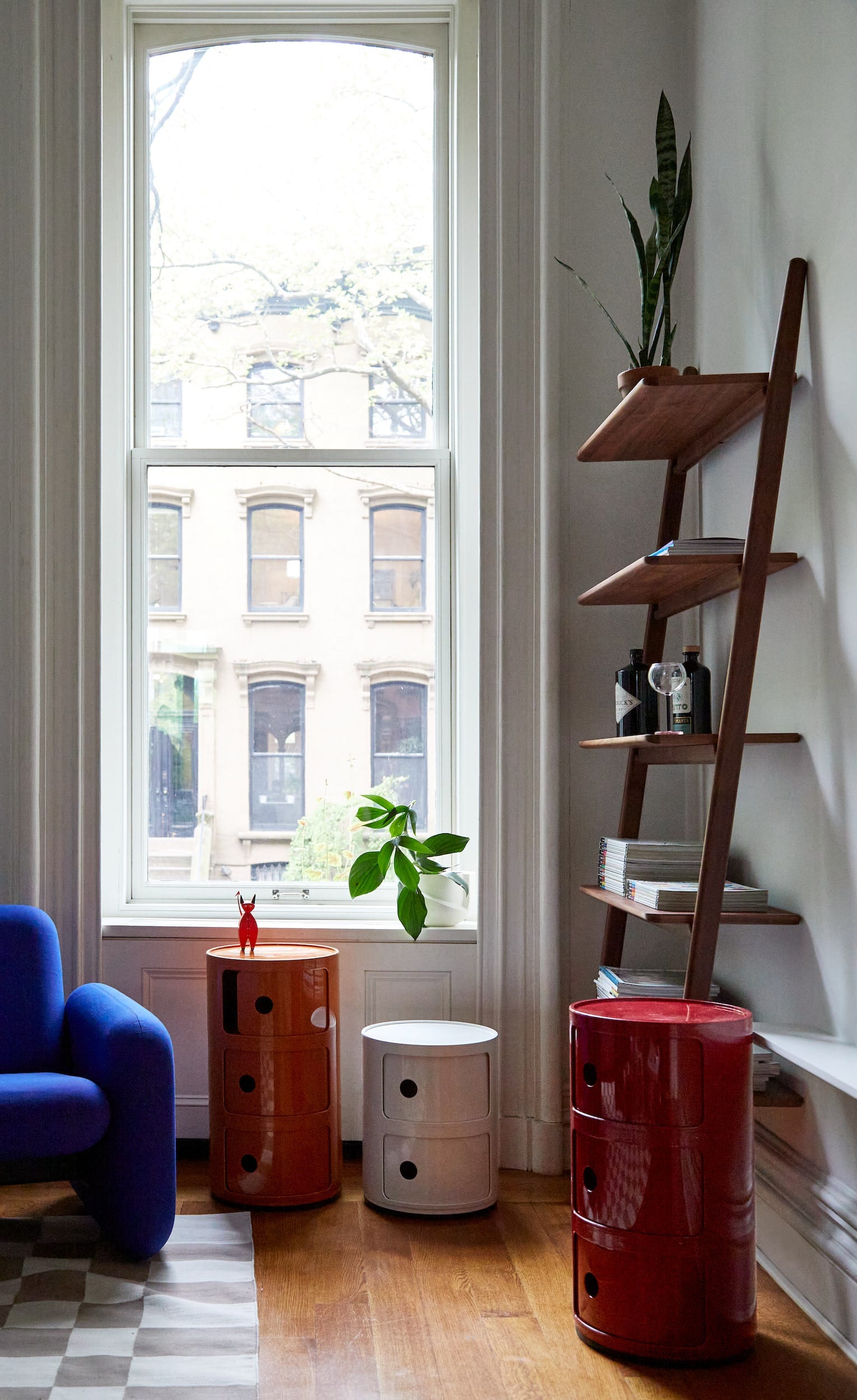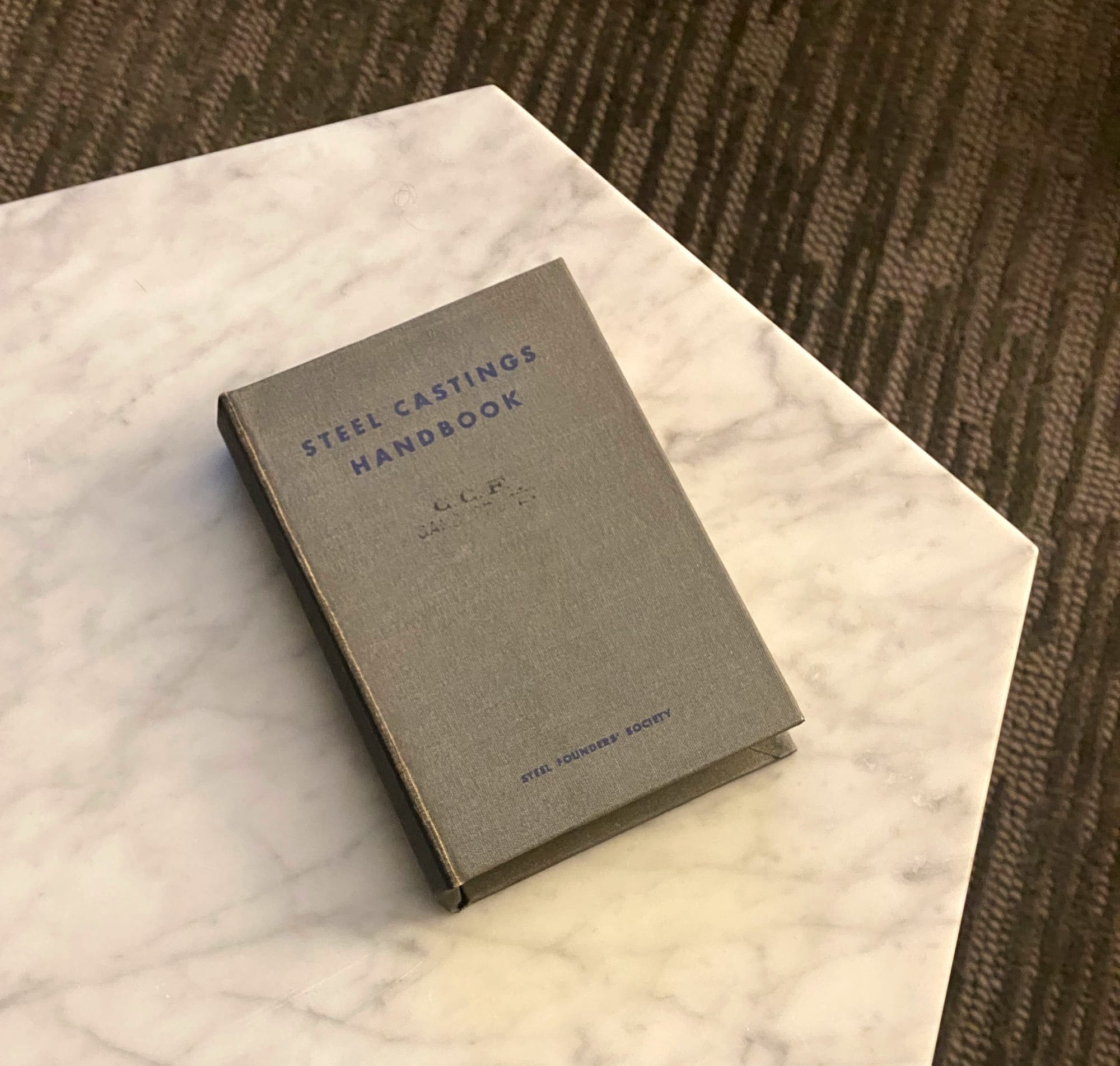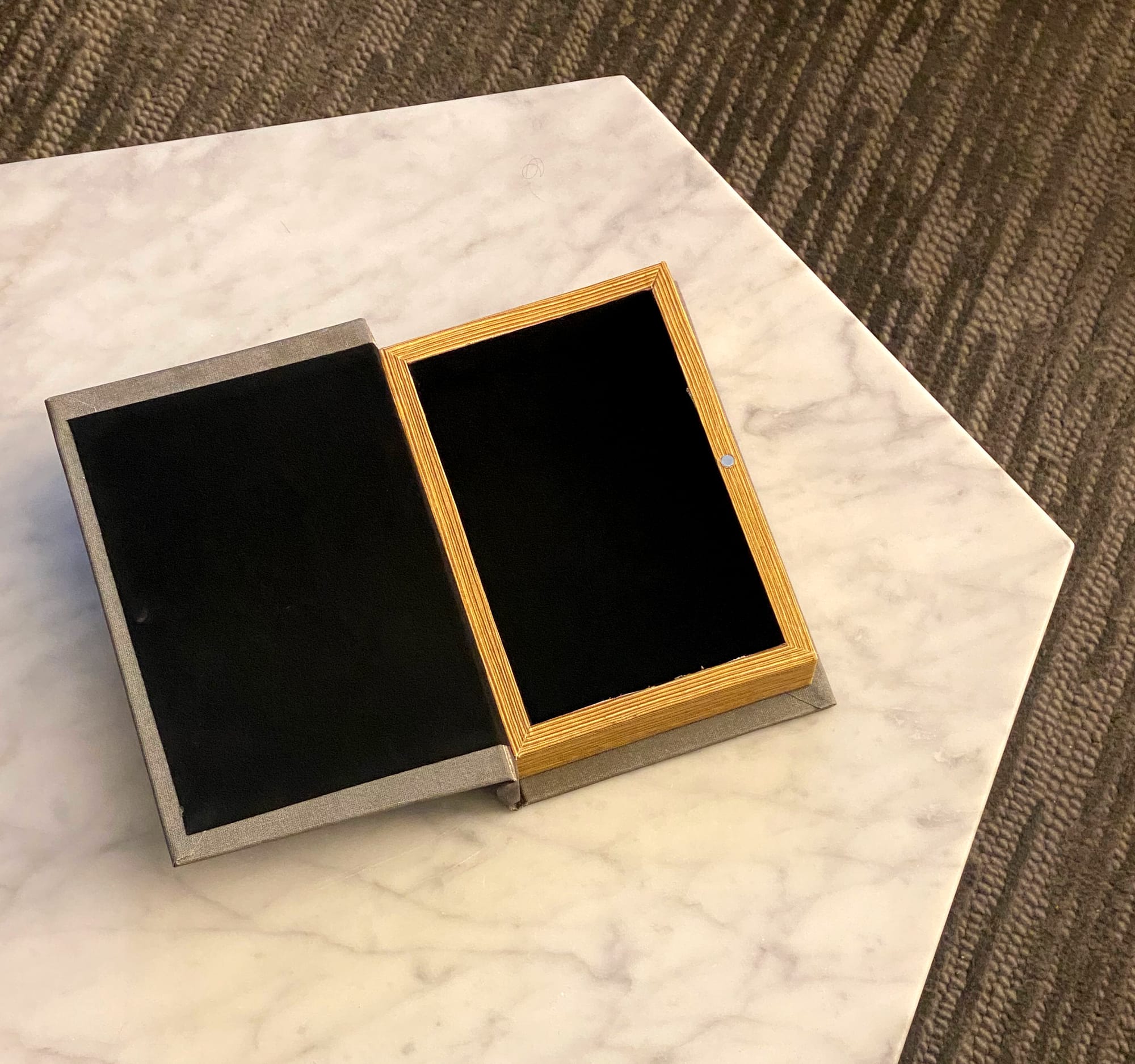Hide: micro-decorating move #15

The weekly micro-decorating newsletter * Issue 12 of 13, F23 *
Subscribe free *
Hiding is the great equalizer in interior design. No matter how large or small your dwelling, there are always nooks and crannies for getting things out of sight, as well as excuses good and bad for doing so. When you think about it, our homes themselves are really just elaborate forms of tucking things away.
It's the accidental hiding that's a problem: the lost earring under sofa cushions, the passport in between useless papers, the matches when birthday candles need to be lit. I'm a regular user of Find Devices on iCloud.com, and when my iPhone makes its scolding-tinged beep, I'm always surprised at where it wound up. I'd like all my possessions to make sounds on demand when they've gone astray, especially my glasses, since I pretty much need them to find them.
Intentional hiding is where the joy is. When you plan for what you want concealed, you make everyday life easier. In both my living room and dining room, my go-to is a modular storage system called Componibili. Designed by Anna Castelli Ferrieri in the nineteen-sixties, it's still in production today, its classic status well-earned.

Because I love books and decorative objects but live in a small apartment, this solution is perfect for making things appear and disappear in sync with the mood of the moment.
With its elegant sliding doors, Componibili makes no effort to disguise its function. There's a subset of intentional hiding that's less overt – in fact, invisible. Think of secret passageways leading to private rooms, the bookcase whose structure incorporates a concealed doorway. Why not give your hiding a James-Bond flair?
My method is small-scale but pleasurable, a worn-out textbook that looks far too boring to consult:

It's actually the trick facade of a velvet-lined compartment, suitable for hush-hush things that deserve some drama:

This type of hiding might even be good for you. In The Quiet Thrill of Keeping a Secret, the New York Times recently reported that it can be energizing to postpone sharing good news with others. So, applying that insight to something material, try savouring an item you cherish by giving it a special place that no one else will find.
That's what I'm using the "Steel Castings Handbook" for. But in the spirit of this article – so sorry! – I'll keep you guessing what that item is.
Over to you
Got a technique for dealing with accidental hiding? Or a must-have tool for intentional hiding? Share your tips (but not your secrets) in the Comments section below.
Thank you for reading.







Member discussion